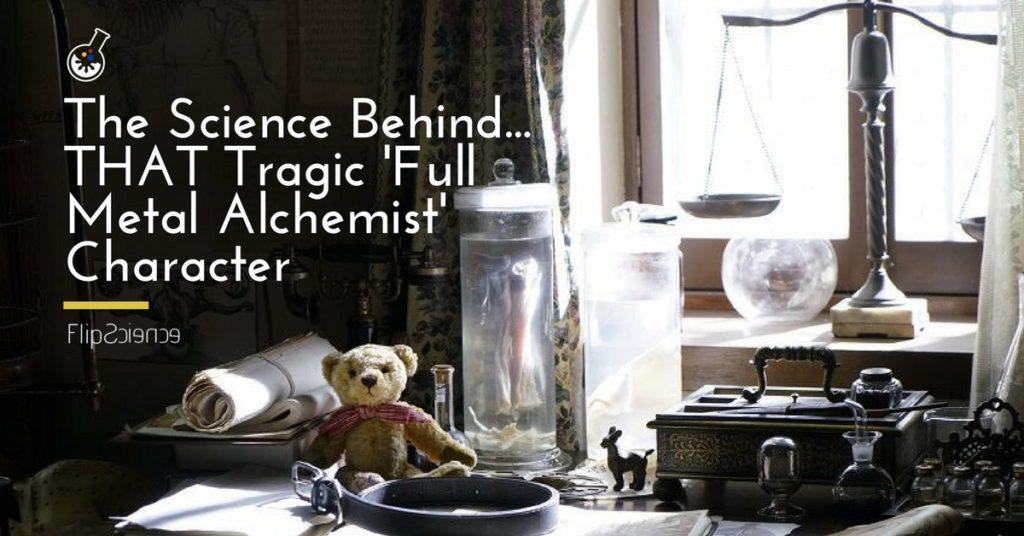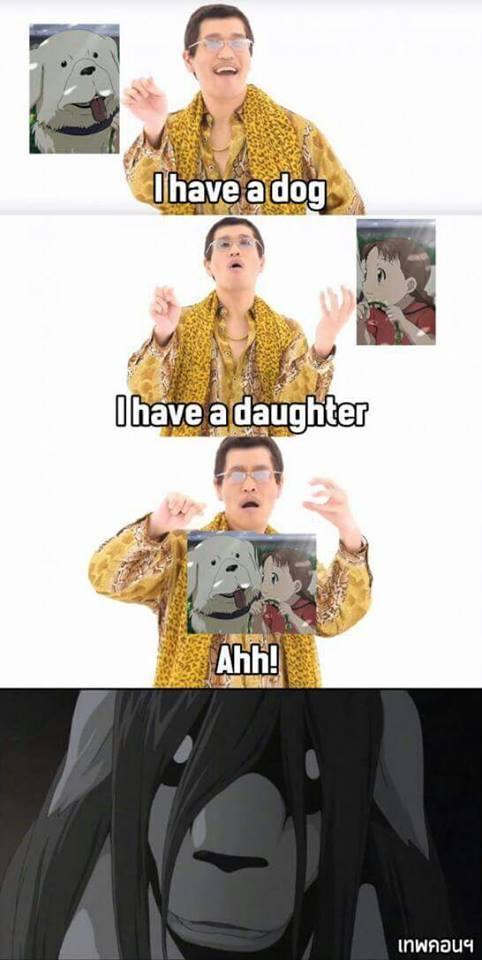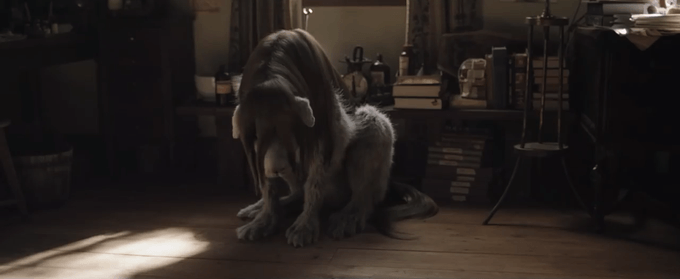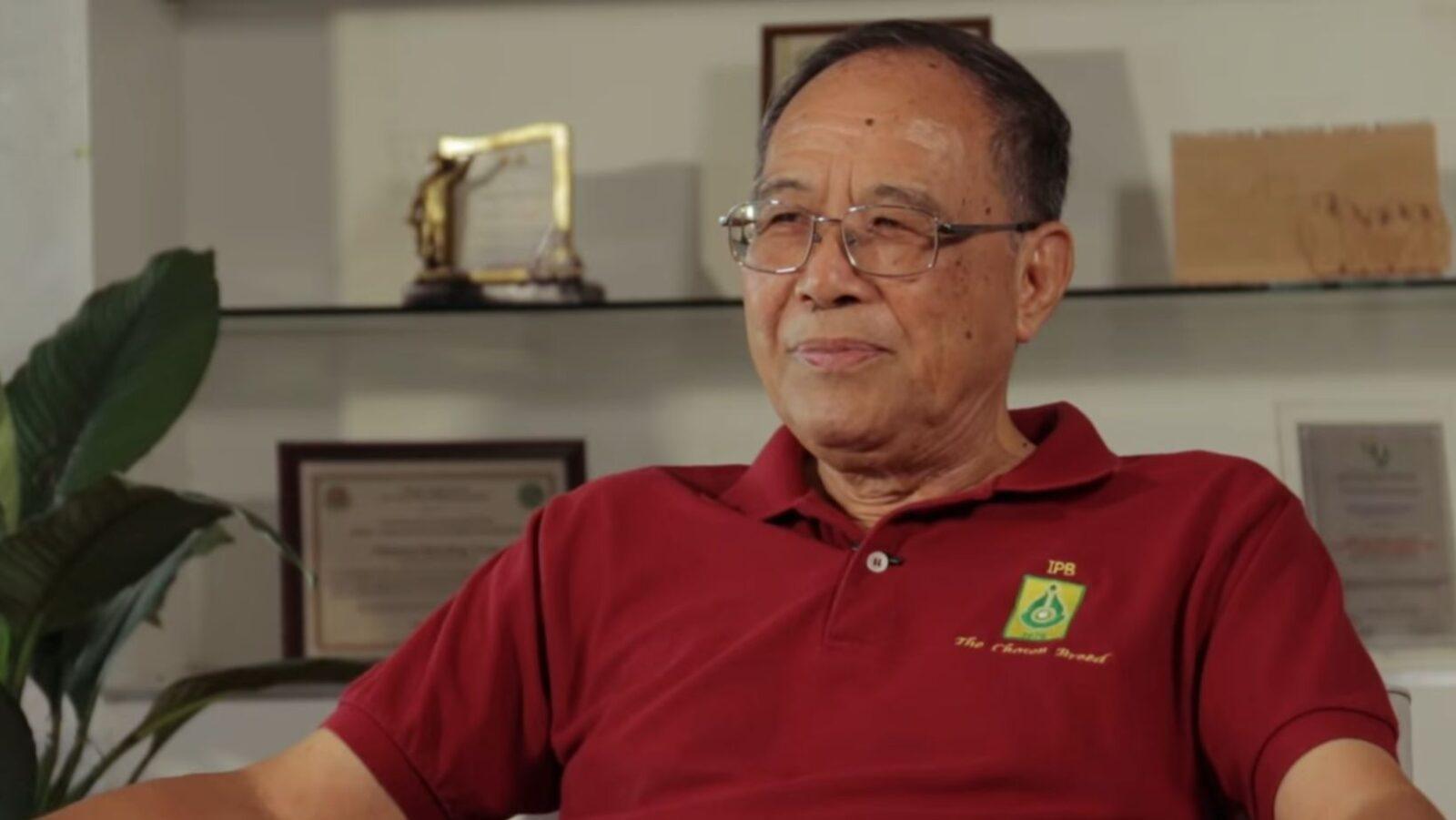Somewhere within the realm of magical interplanetary schoolgirls, blond-haired monkey-aliens, and basketball players making episode-long 3-point-shots exists a fictional world where the rules of science can be simplified with the principle of equivalent exchange.
In the made-up European setting of popular manga and anime Full Metal Alchemist, alchemy is key. Aside from transmuting objects from one form to another, that world also made it possible to merge two living beings and create a chimera.
(If you’ve watched the entirety of Full Metal Alchemist, now would be a good time to turn back. Unless you want to get sucked into a feels trip, of course.)
And if you’re a dad who is pressured into keeping his alchemist license and also happens to have a daughter and a dog in your house, there’s that temptation to become the best horrible dad not only in anime but across fiction.
We’re not entirely sure which fact is more horrifying: that we’re having a laugh at poor Nina Tucker’s expense, or that we’re making a PPAP joke in 2018.
The recent release of the Full Metal Alchemist live action movie adaptation made fans relive the grisly fate of Nina Tucker and Alexander in cute and cuddly CGI.
Thankfully, a real-life Nina Tucker is impossible, at least for now. But a “chimera” in the real world? That’s a different (and fascinating) story.
Chimera…wha-huh?!
In Greek mythology, a chimera is a fire-breathing unity of more than two beasts; remarkable, but still fictional.
In medicine, however, a chimera is a human with two sets of DNA. In other words, there’s enough code inside a real-life chimera to create two distinct, separate human beings.
To put it in more blunt terms, if you are a chimera, that means you absorbed your twin as a zygote. This is why some mothers are not a genetic match with their offspring. Some people can even have two blood types!
Don’t get freaked out, though, as chimeras aren’t exactly natural abominations. Chimerism is fairly common in some plants and animals. In fact, this phenomenon may even be more common in humans than we realize.
However, due to the fact that people don’t normally have their DNA checked for things like this, it just goes unnoticed.
Still doesn’t explain the other voice in your head, though. Sorry, champ.
There are a few known cases of chimerism. There’s that man who had a son who is also his genetic nephew, and a woman who needed kidney transplant and discovered her sons were not genetically hers.
With two sets of DNA, donating and receiving blood an organs can get a bit tricky. Also, you can potentially get away with crime, but please don’t try. (Please?)
Knowing you have this condition also means knowing that you’re supposed to be two persons, not one.
(On the bright side, if you’re a chimera and your date ditches you even before your orders arrive, dig in. Just think that you’re eating for two.)
More than just full metal malarkey
As for creating a human-animal chimera, the possibility is just around the corner (whether you like it or not).
In 2017, the Washington Post reported on Cell’s study about successfully bioengineering a human-pig embryo, a proof of concept for possibly harvesting human organs grown in animal bodies.
However, as the Washington Post noted:
“Some argue that, since stem cells can become any kind of tissue, including parts of the nervous system, chimeras raise the specter of an animal with a human brain or reproductive organs. Others think there’s a symbolic or sacred line between human and animal genetic material that should not be crossed.”
After all, reviving extinct species is one thing, but merging a human and a pig to create a new creature? That should make for an interesting dinner table conversation.
Clearly, The Washington Post’s writer was a Full Metal Alchemist fan.
Nina Tucker was a victim of an alchemist who’s a few atoms short of a molecule, for sure.
What’s your take on human-animal chimeras by real-world scientists, though? –MF
Author: Ronin Bautista
Ronin is a Christmas-loving wandering scribe who wanted to be a doctor, until he learned it meant cutting dead bodies open. He is currently finishing his MA in Asian Studies (major in Japanese Studies), while teaching journalism classes at UP Diliman’s College of Mass Communication.










